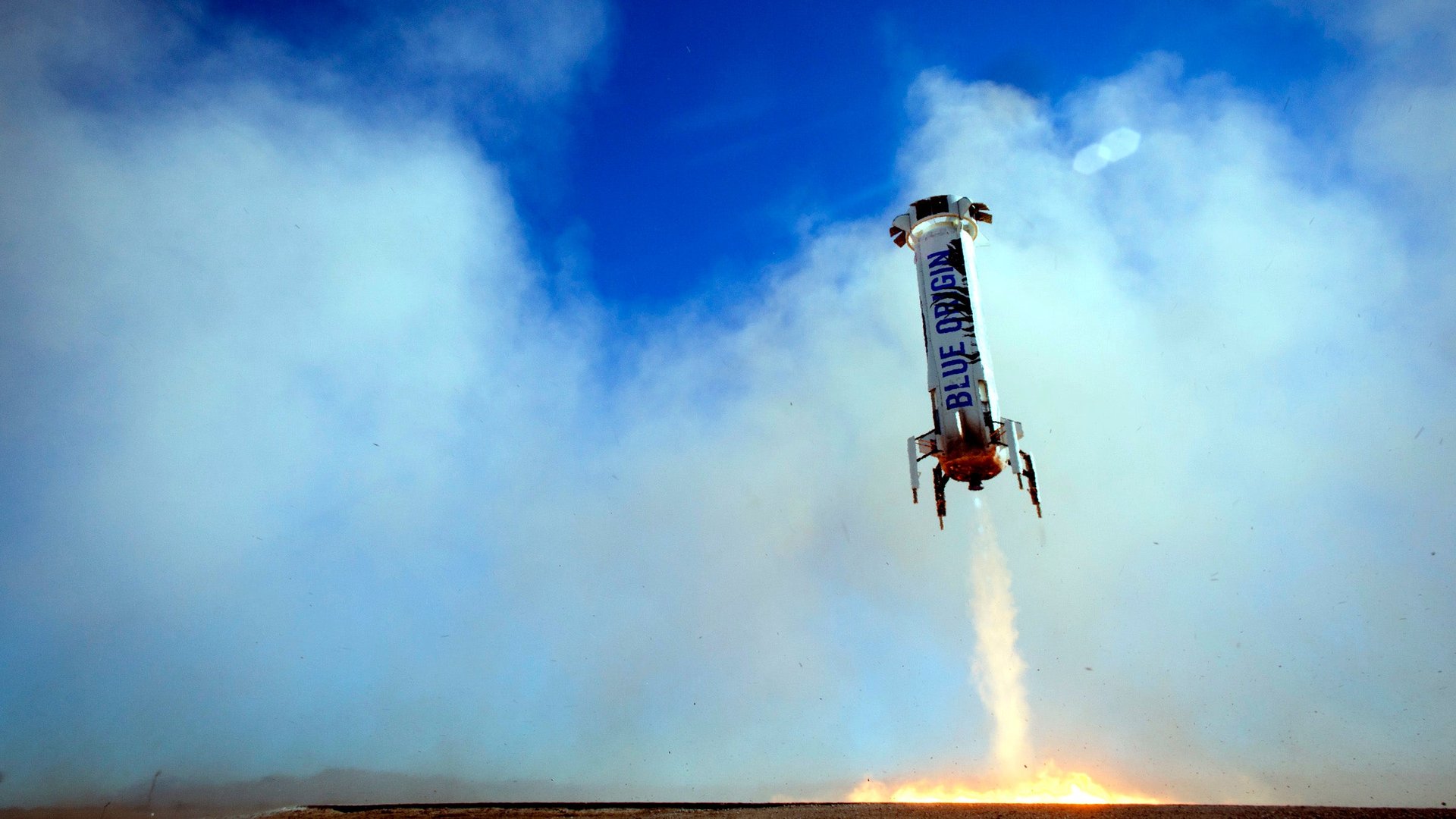Jeff Bezos and his Blue Origin rocket company might have the key to making space tourism a reality
Over the weekend, Blue Origin, the space company founded by Amazon CEO Jeff Bezos, launched a reusable rocket booster for the third time, carrying a space capsule to the height of 103 kilometers above the earth. The view is impressive.


Over the weekend, Blue Origin, the space company founded by Amazon CEO Jeff Bezos, launched a reusable rocket booster for the third time, carrying a space capsule to the height of 103 kilometers above the earth. The view is impressive.
And with the third successful launch and landing under his belt, Bezos has matched the 2004 Ansari XPrize-winning performance of Burt Rutan’s Spaceship One.
That reusable spaceplane breached the Kármán line—named for the physicist who determined that atmospheric flight becomes impossible at 100 kilometers of altitude—three times in 2004. Backed by Microsoft billionaire Paul Allen, it was the first privately funded reusable spacecraft, and helped inspired today’s private space industry.
The next iteration of Spaceship One, commissioned by Richard Branson to be the flagship of his Virgin Galactic space tourism company, has yet realize its potential. It hasn’t flown since a 2014 accident during a test flight killed one pilot, although Branson unveiled the next version of the spacecraft in February.
On the other hand, Blue Origin’s New Shepard rocket, which flew for the first time in 2015, appears to prove that a vertical-takeoff rocket can be a feasible launch vehicle for space tourism.
Most rockets, like those built by SpaceX, ULA, or government agencies, must be powerful enough to carry heavy cargo to the altitudes where the International Space Station and satellites orbit, and are consequently costly to build and maintain. Even SpaceX’s reusable rocket will cost about $40 million per launch if it becomes operational. Launching the much smaller New Shepard is thought to be much cheaper, although Blue Origin hasn’t disclosed details.
In fact, Blue Origin has revealed very little about the project at all—the costs, engineering behind it, or when it might start test flights with humans onboard. But its ability to fly the same sub-orbital rocket three times in the last six months, stealing some thunder from SpaceX founder Elon Musk in the process, suggests that Blue Origin does have the capability to actually offer the ”astronaut experience“ that other space startups have pursued to their detriment.
Some 700 people have paid for a $250,00 ticket on Virgin Galactic’s spaceplane, even though its prospects for ever flying to space, much less with tourists on it, remains an open question.
As it stands, only seven people have gone to space as tourists. All have paid fees of $20 to $40 million for packages developed by the US company Space Adventures, and underwent as much as a year of training before flying to the International Space Station aboard a Soyuz rocket. The last such launch put Cirque du Soleil founder Guy Laliberté on a trip to space in 2009.